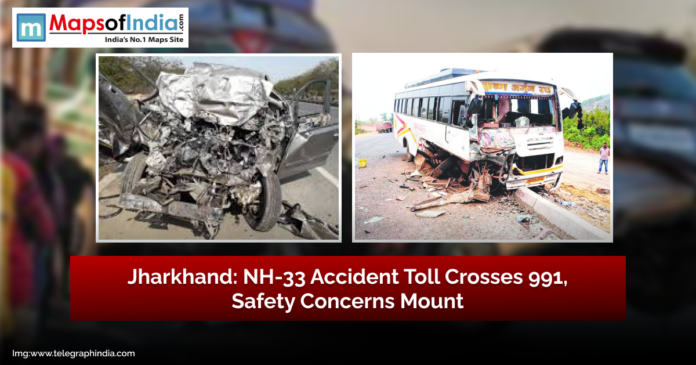The National Highway-33 has tragically come to be known as the highway of death, which connects Ranchi, Jamshedpur, and Hazaribagh, and is one of the busiest highways in Jharkhand. A total of 991 individuals have died on this highway in the past four years alone, and this is something that begs serious questions regarding the road safety and the infrastructure in the state. The sheer number of deaths gives a bleak outlook of a road that is now synonymous with tragedy.
NH-33 makes the Jharkhand industrial belt a lifeline as coal, minerals, and other products are transported to other regions of the country. It has been one of the busiest highways in the region because of its significance in trade and transport. Nevertheless, the traffic has made the route a danger zone. Accidents have become a norm with thousands of trucks, buses, and personal cars going on the road day after day. The poor condition of the highway and the unfinished widening activities are just contributing to the increasing risks.
Residents refer to NH-33 as a nightmare at all times, and accidents are reported almost every week. The situation has been aggravated by overspeeding, irresponsible driving, and ineffective enforcement of the traffic regulations. Various sections of the highway are poorly lit, speed limiters, or signposts and night travellers find it especially unsafe. This is also in the absence of safety fences and emergency response centres, which complicates the crisis and victimization, as they are often not provided with urgent medical services.
The death of almost a thousand people in four years alone has raised an outcry among the people and commuters who use the highway daily. There have been calls to have the government take immediate action to have the pending expansion work done, road safety equipment installed and policing on the accident-prone stretches stiffer. Civil society organizations have also raised the alarm that awareness campaigns should be created to stop irresponsible driving.
There is an accepted awareness of the increased number of accidents and deaths, but the action on the ground is still minimal. Although there are commitments towards the repair of the roads and safety provisions, the actual situation on the ground has been taking away innocent lives. As NH-33 is a vital link to the economic operations in Jharkhand, its safety is not only an infrastructure issue, but also a question of life savings.
The terrible statistics of NH-33 explain the importance of urgent intervention. The highway can always be described as a death trap unless stringent efforts are implemented to improve the condition of roads and control traffic, leaving families ruined and communities in mourning.










